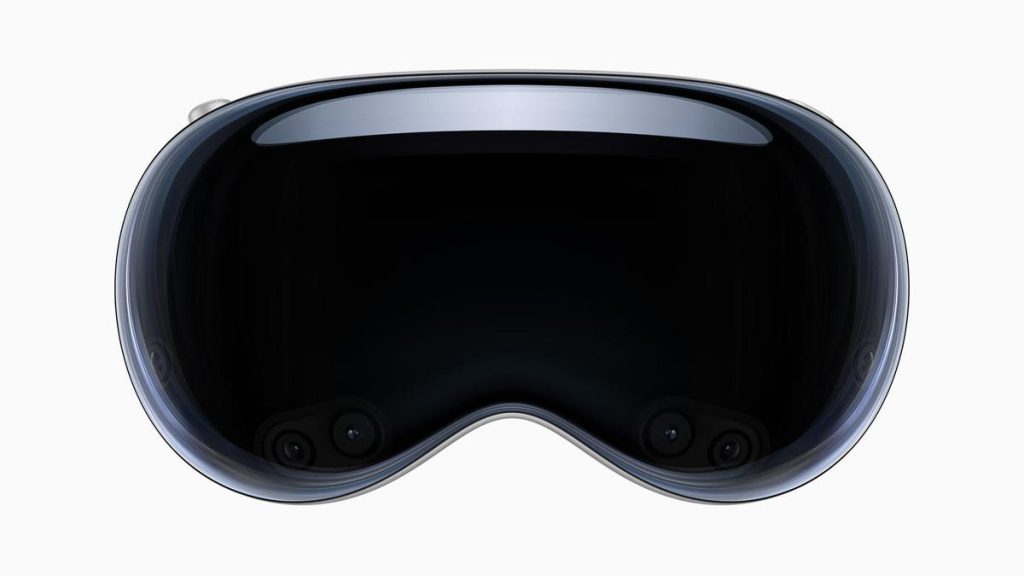When I haven’t been busy contributing to it myself, one of the most exciting aspects about following this year’s WWDC news cycle is reading up on my friends and peers as they share their literal initial impressions with Vision Pro. After the keynote ended on Monday, Apple invited select members of the press to what Daring Fireball’s John Gruber described in his writeup as a “temporary ‘field house’ building Apple constructed specifically for this experience.” The demonstrations, only a half-hour in duration and carefully choreographed by Apple, included entertainment, productivity, mindfulness, and many more activities.
I’ve been asked several times, so to reiterate: I did not get a demo.
The accessibility of visionOS notwithstanding, the reason I’ve been so keen to learn about people’s short-lived trial runs with Vision Pro is mainly for ergonomics’ sake. As I wrote, the ease of use with which a person gets the device on and off their head, as well as the weight, will play instrumental roles in shaping an accessible experience for someone with a disability. While it’s understandable to focus one’s analytical energy on the software side of the device—what visionOS can do and how accessible it is—it’s just as important, as an assistive technology, to ask questions about the physical object itself. It should not be taken for granted that people are going to effortlessly manipulate Vision Pro in putting it on, not to mention use controls like the Digital Crown.
As jam-packed as the headset’s portion of the keynote was, Apple expectedly left out a few pertinent details about the product. Two such examples are Vision Pro’s weight and additional strap. Regarding weight, it’s almost impossible not to draw comparisons to Apple’s AirPods Max. As a personal anecdote, I was gifted a pair for my birthday in 2021, and while they sound amazing, there’s zero chance of forgetting about them in the same way you might with standard AirPods. Gruber pegged it exactly right when he wrote in his review that “heavy is the head that wears AirPods Max.” In a similar vein, Gruber noted of Vision Pro that “the single biggest downside from my demo experience is that Vision Pro feels heavier on your face than I had hoped it would,” while adding “it’s not uncomfortable… but I never forgot it was there, and it just makes your head feel a bit front-heavy.” From an accessibility standpoint, it’s plausible the headset’s heft could make it a deal-breaker for people with certain physical and/or sensory conditions. It just may not be feasible (or safe) to wear such a heavy object on one’s head. In this context, the fact Apple says Vision Pro has only a 2-hour battery life may conceivably be a benefit for those who are sensitive in that sense.
As for the additional strap, a report from MacRumors’ Dan Barbera indicates the strap puts Vision Pro on par, weight-wise, with competitors like Meta’s Quest line. Ergonomically speaking, however, the presence of an additional strap ushers in questions about not just bulk, but what it adds in complexity in terms of getting the device on and off. It remains to be seen, from my vantage point at least, whether that extra strap helps or hinders the process. As with weight, it’s an important question.
It’s also worth mentioning some members of the media who wear glasses, like my good friend Gruber, had their glasses scanned by an Apple PR representative in setting up the headset. Juli Clover, also of MacRumors, reported on Monday that, although Apple has partnered with Zeiss on Vision Pro’s prescription lens system, “not all prescriptions will be supported” once the headset starts shipping. That caveat speaks to the exclusionary parts of Vision Pro that may simply be too rich for Apple’s blood to accommodate at this time. Current technology may not be in a position to accommodate everybody, so some will unfortunately be left out. Even the most cutting-edge technologies have blunt ends.
Finally, a few thoughts on Vision Pro’s price tag. It’s entirely possible for both statements to be true: Vision Pro is extremely expensive and not for everyone, while also being a reasonably priced product considering all the technology inside and Apple’s modus operandi for cornering the high-end of their respective markets. In a disability context, Vision Pro is more than likely priced too high for most disabled people. That’s as much an indication of the community’s general socioeconomic status as it is Apple’s product marketing strategies. Nonetheless, for those who can afford it, one could argue Vision Pro’s immense value proposition if you factor in not only its camaraderie with the broader Apple ecosystem, but its accessibility. Judging by the near-unanimous praise of the demos this week, it’s not a stretch to think Apple has built the most accessible (in terms of usability to disabled people) headset on the market. A supervised demo is not at all like a full review, but still, expectations were high—and Apple seems to have exceeded them at this juncture.
It’s hopeful news for disabled people. As a disabled person—and as a journalist—I cannot wait for my eventual Vision Pro try-on experience.
Read the full article here










